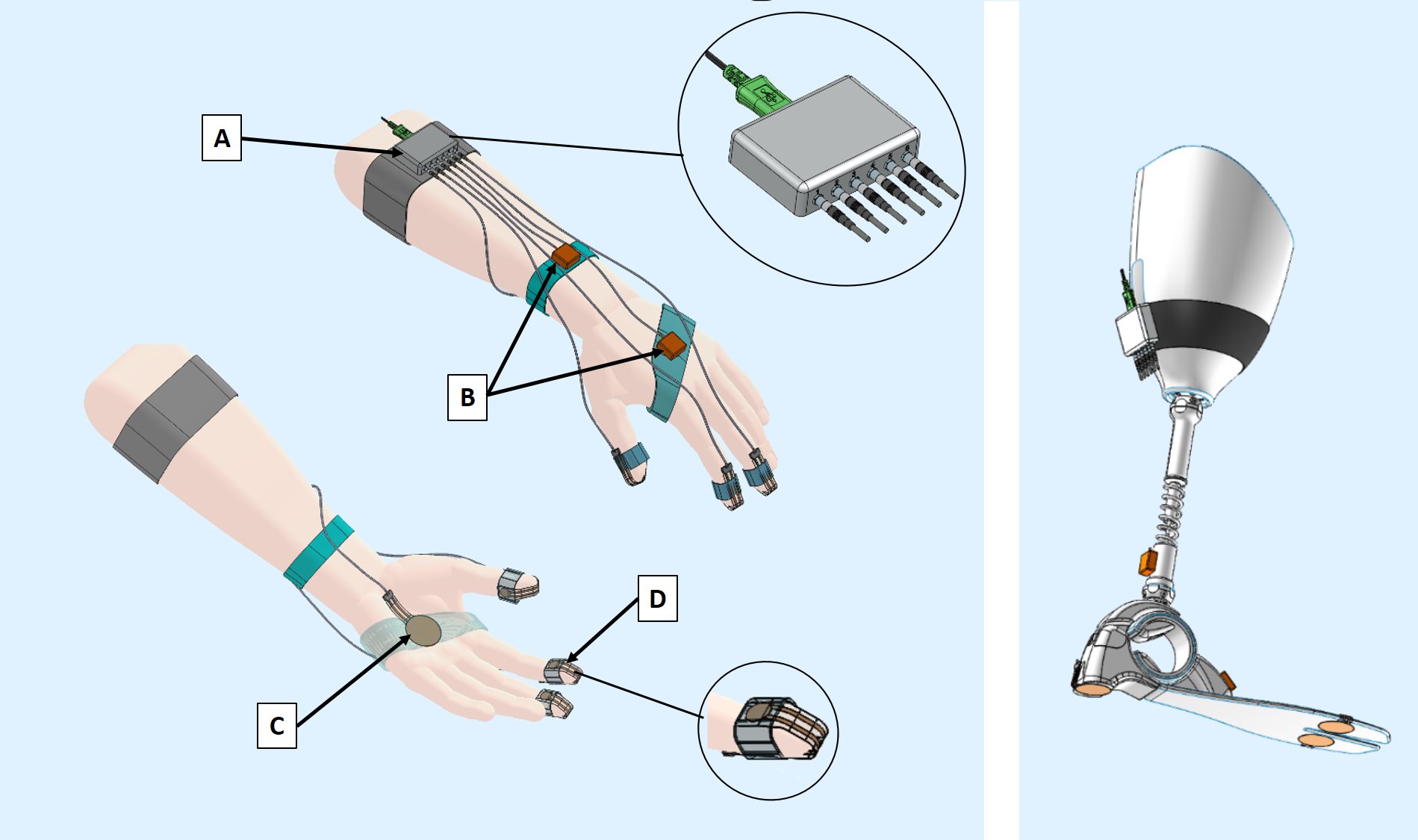 While there have been important advances in the design and actuation of prosthetic limbs, these devices lack a means for providing direct sensory feedback. As such, users must infer information about limb state from cues like pressure on the residual limb, resulting in diminished control of prostheses, and reduced adoption and use of these technologies. Restoring a sense of touch to amputees is key to making prosthesis more functional.
While there have been important advances in the design and actuation of prosthetic limbs, these devices lack a means for providing direct sensory feedback. As such, users must infer information about limb state from cues like pressure on the residual limb, resulting in diminished control of prostheses, and reduced adoption and use of these technologies. Restoring a sense of touch to amputees is key to making prosthesis more functional.
Several research groups, including the Rehab Neural Engineering Lab at the University of Pittsburgh, have demonstrated that interfacing with the nervous system to deliver electrical stimulation can provide sensory feedback that improves control of prostheses. In order to develop a prosthesis that ‘works’ and ‘feels’ like a hand or foot, this sensory feedback must be coupled with information about the current state of the limb. The uHaptic package will provide a wearable platform to record this information without the need for major modification of the existing prosthetic limb, and will provide a universal software interface to send sensor data to stimulation systems.
 Sensorizing existing prostheses to obtain limb-state information faces a tradeoff between resolution and cost-effectiveness. uHaptic seeks to balance this tradeoff by developing a low-cost, robust sensor package that is wearable for upper or lower limb prostheses and is universally compatible with any sensory feedback device.
Sensorizing existing prostheses to obtain limb-state information faces a tradeoff between resolution and cost-effectiveness. uHaptic seeks to balance this tradeoff by developing a low-cost, robust sensor package that is wearable for upper or lower limb prostheses and is universally compatible with any sensory feedback device.